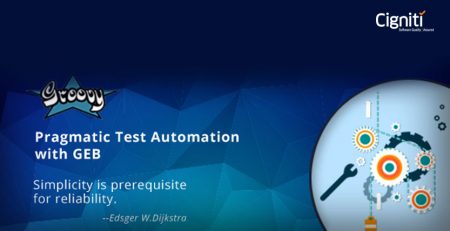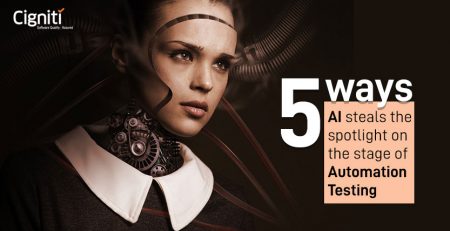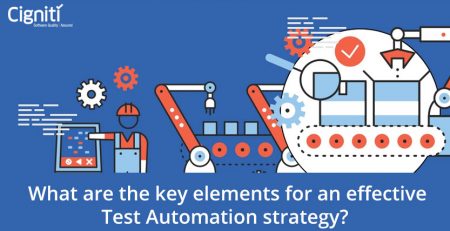Hyperautomation – Unlock the maximum potential for an automated enterprise
Every enterprise is awash with repetitive protocol-based work where it needs to collect and enter data, process transactions, reconcile records, and perform back office work manually.
If these tasks are automated, the job can be accomplished quickly, smartly, and efficiently without jeopardizing the quality.
While the Robotic Process Automation (RPA) tends to focus on automating repetitive and rules-based processes, intelligent automation, or as it is more popularly referred to – hyperautomation, as coined by Gartner – incorporates artificial intelligence (AI) technologies like machine learning, natural language processing, structured data interaction, and smart document processing to harness the maximum potential of automation.
The need to look beyond RPA
To drive automation, complex coding was required before RPA came into existence. Today, RPA has simplified the process with the usage of bots. However, RPA is restricted to automate repetitive tasks.
In this age of digitalization, where consumers need change quite often, there is a dire need to scale beyond RPA. To do so, enterprises need to grow beyond the common approach of automation, which is focused mostly on delivery, and scale to the controlled iterative portions of hyperautomation.
According to Gartner, “By 2022, 65% of organizations that deployed robotic process automation will introduce artificial intelligence, including machine learning and natural language processing algorithms.”
Hyperautomation, the next level evolution of RPA embodies the concept of ‘automation first’ and is now seeing widespread usage and adoption across enterprises.
While enterprises are seeing large scale benefits, it comes with an equal share of challenges.
Challenges of hyperautomation
Even If RPA bots can enable the integration of other technologies with legacy systems, significant challenges still persist. It could either be organizational challenges or limitations in adapting to these emerging technologies.
The hardware and software costs in developing and deploying these solutions will usually be on a higher side. The regulatory and social acceptance for automation tends to take time. Even if the automation makes absolute business sense, the adoption takes time.
With an amalgamation of various technologies such as RPA, AI, ML, etc., there is a need to have precise knowledge of each technology for efficient cross-functional collaboration.
The cross-functional collaboration in hyperautomation is the key differentiator in moving beyond RPA. However, it requires discipline while implementing it.
Key strategies for enabling hyperautomation in your organization
Planning, Applying, and Augmenting are the 3 key strategies laid down by Gartner to enable hyperautomation in your organization.
1.Planning: For any business objective to succeed, it is imperative to have perfect planning. Hyperautomation also falls in line with this concept.
With many technologies in the foray, it is an absolute must to chalk out a proper plan keeping the business goals in mind. If your goal is clearly defined, the planning process becomes easy.
Ensure you have the right expertise to deal with all the emerging technologies involved in hyperautomation and strategize a clear roadmap.
2. Applying: Once you have a plan that is pitch-perfect, it is equally important to implement it with perfection.
A wide variety of tools is used to discover, analyze, design, monitor, and to enable end-to-end process automation.
Applying a well-defined plan plays a key role to attain your business goal.
Identify the optimum combination of these tools that would be required as per the use cases and the business objective.
Ensure that you have the required infrastructure and take extra care during the implementation phase.
3. Augmenting: It is tougher than it would seem to augment AI, ML, and other processes.
The challenge lies in how each of the components complement each other.
The communication channel between these technology stacks should be well knit to attain process efficiency.
It is also imperative to achieve optimal augmentation between all the applications assessing their prerequisite resources and other relevant factors.
If all the strategies are well laid down, enterprises can unlock maximum benefits from hyperautomation.
Benefits of hyperautomation
Hyperautomation plays an imperative role in cracking many more automation opportunities.
According to Gartner, “By 2024, organizations using Hyper Automation will see over 30% drop in their operational costs”.
With an evolving set of AI technologies, hyperautomation can recognize and automate all possible business processes at a rampant pace.
Hyperautomation will play an effective role in measuring the Return on Investment (ROI) and can manage the full life cycle of automation at a larger scale.
It is well equipped to enable robots and humans to automate all the business processes together irrespective of the scale.
The advanced analytics help validate and rationalize the ROI of automation efforts and its influence based on business consequences that matter to your enterprise.
According to UIPath, “Hyperautomation builds on the momentum behind RPA, led by the democratization of automation and IT and accelerated by the liberation of mundane and repetitive tasks for workers across every industry. In many ways, hyperautomation is redefining work.”
We are already in the era of “Automation First” where hyperautomation is helping enterprises understand its huge potential of how extensive the opportunity and swiftness of automation can be today.
Conclusion
Hyperautomation involves using more tools, people, and bots to take full advantage of all the available technologies that help in discovering and realizing the true impact of automation in your digital transformation journey.
Cigniti Technologies is a global leader in Independent Software Quality Assurance and Quality Engineering Services that accelerates digital transformation journeys of enterprises and governments and provides robust performance and security testing services by leveraging Hyperautomation technologies such as RPA, AI, and Intelligent Automation.
Cigniti’s hyperautomation experts collaborate with your team to identify the best automation candidates based on the process characteristics & define the governance framework for the engagement. Our hyperautomation services include providing end-to-end automation of business processes and help reduce the cost of quality. Our experts help define hyperautomation metrics, measures, benchmarks, and baselines and suggest any changes required, and define & develop a comprehensive hyperautomation framework.
Contact our hyperautomation experts to unlock maximum potential for an automated enterprise.





Leave a Reply